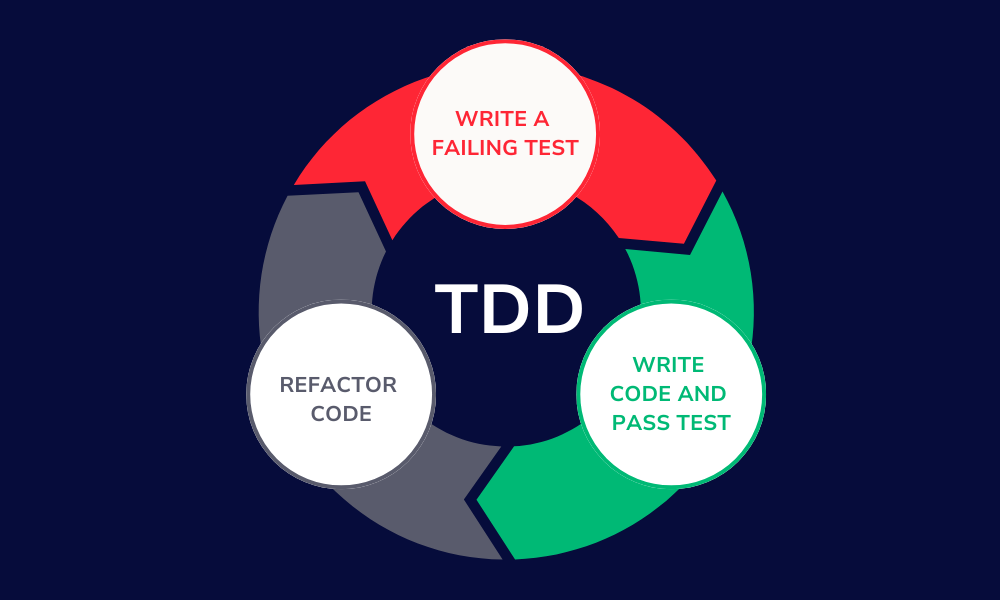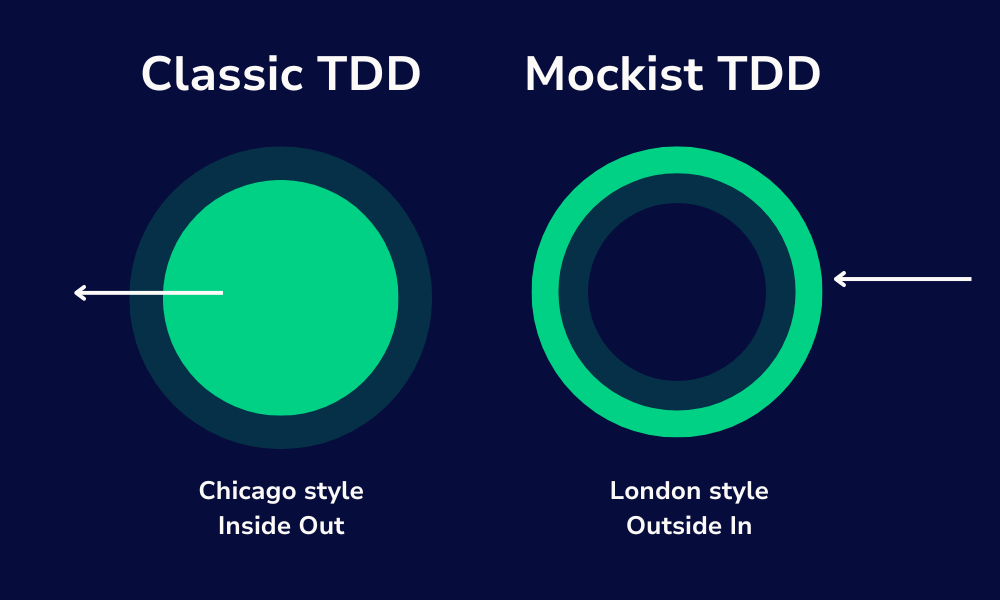Test-driven development (TDD) is a robust software development methodology that can significantly improve the quality and reliability of mobile applications. With TDD, you create the tests before you write the code for a specific feature or functionality.
TDD is best used with Agile software testing, as it helps provide developers with a safety net of automated tests, ensuring that any changes made to the app code don’t break the existing functionality. However, TDD isn’t for everyone and can be frustrating to implement if you don’t fully understand the methodology.
In this blog, we’ll define TDD, explain how it works, discuss its benefits and disadvantages, and discuss how you can use Sofy to easily implement TDD into your testing process.
What is Test-Driven Development?
Test-driven development (TDD) is a software development methodology in which tests are written before the actual code. In TDD, developers first write a test that defines a function or improves a feature. Only after the test fails do they write the minimum amount of code necessary to pass it. This cycle is repeated iteratively, ensuring that every piece of the app is thoroughly tested before it’s implemented.
What’s the Difference Between TDD and Traditional Testing?
Traditional testing usually involves writing the code first and then creating tests to verify its functionality. This approach can lead to several issues:
- Late Bug Discovery: Bugs are often discovered late in the development process, making them more expensive and time-consuming to fix.
- Lack of Test Coverage: Since tests are written after the code, there’s a higher chance of missing critical edge cases.
In contrast, TDD focuses on:
- Early Bug Detection: By writing tests first, developers can catch bugs early in the development cycle.
- Comprehensive Test Coverage: TDD encourages writing tests for every new feature or change, ensuring thorough test coverage.
Process of Test-Driven Development

TDD typically follows the Red-Green-Refactor process:
- Red: Create a test case for an app functionality that doesn’t exist yet (the test will fail).
- Green: Write only enough code for the test case to pass.
- Refactor: Improve the app code through refactoring.
This cycle is repeated for each new piece of functionality, ensuring that the codebase remains robust and bug-free.
Red: Write the Test
Create a unit test for a specific app feature or functionality that doesn’t exist yet. Once the test is written, run the test and make sure it fails. This is a strategic failure, as the test is only designed to pass when developers write the code for that feature.
Green: Make the Test Pass
Once the test fails, developers can write the code for the specific app feature or functionality. The code should meet the feature/functionality requirements but can be minimal and messy at this stage. Once the code is written, run the test again and make sure it passes.
Refactor: Improve the Code
Once the test has passed, improve the app code through refactoring. Refactoring is the process of improving existing app code by simplifying the code, making it more readable and easier to understand while maintaining the app’s original behavior (you still want the original test to pass).
What are the TDD Approaches?

There are two primary approaches to TDD:
Classic TDD
Also known as Inside Out or Chicago School of TDD, the Classic TDD approach focuses on writing tests driven by behavior specifications. Developers write tests based on how the software should behave from an end-user perspective.
This approach is easier to use for smaller apps with minimal external dependencies.
Mockist TDD
Also known as the Outside In or London School of TDD, the Mockist TDD approach emphasizes interaction testing. In this approach, mock objects are used to represent dependencies, helping to test the interactions between objects rather than their states.
This approach is easier to use when working with more complex apps that have many changing external dependencies.
Benefits of Test-Driven Development
There are several scenarios in the software development lifecycle that it may be beneficial to use test-driven development. This includes:
- Complex Systems: For systems with complex logic, TDD ensures that each component works correctly before integrating them.
- New Features: When adding new features, TDD helps define the feature requirements clearly and ensures that the implementation meets those requirements.
- Refactoring: TDD provides a safety net when refactoring code, ensuring that existing functionality isn’t broken.
Disadvantages of Test-Driven Development
While TDD is useful in Agile testing environments, it may not be suitable for every situation, including:
- Prototype Development: TDD might slow down the process for quick and dirty prototypes where speed is more critical than robustness.
- Legacy Code: Integrating TDD into a large existing code base can be challenging and may require significant upfront investment.
- Simple Projects: For small, straightforward projects, the overhead of TDD might outweigh the benefits.
Test-Driven Development Examples
Here are some examples of how you can effectively use TDD in different mobile app contexts:
Example 1: E-Commerce App
Scenario: Adding an item to the cart.
- (Red) Write a failing test for adding an item to a cart.
- (Green) Write the minimum code required to pass the test, such as updating the cart’s item list and total price.
- (Refactor) Clean up the code, ensuring the cart’s functionality is efficient and maintainable.
Sample code (Java):
Example 2: Health and Fitness App
Scenario: Logging a workout.
- (Red) Write a test for logging a workout.
- (Green) Write the app code to log the workout and update the history.
- (Refactor) Optimize the logging mechanism for better performance.
Sample code (Python):
Example 3: Banking App
Scenario: Transferring funds between accounts.
- (Red) Create a test for transferring funds between accounts.
- (Green) Implement the transfer logic and update account balances.
- (Refactor) Ensure the transfer process is secure and efficient.
Sample code (Java):
Using Sofy for Test-Driven Development
Sofy’s scriptless testing platform can significantly enhance the TDD process:
- Automated Test Creation: Sofy allows developers to create automated tests without writing code, making it easier to integrate TDD into their workflow.
- Real Device Testing: With access to 100+ real Android and iOS devices, Sofy ensures that tests are run in a realistic environment, providing accurate results.
- Continuous Integration: Sofy integrates seamlessly with CI/CD pipelines, enabling automated testing with every code commit, ensuring immediate feedback.
- Comprehensive Reporting: Detailed reports and analytics help developers understand test results and quickly identify and fix issues.
Final Thoughts on Implementing TDD in Mobile App Development
TDD ensures early bug detection, comprehensive test coverage, and robust code by writing tests before code. While it may not suit every project, TDD is highly effective for complex systems, new feature development, and refactoring. Sofy’s scriptless testing platform can streamline the TDD process, making it more accessible and efficient for developers and QA testers. By adopting TDD and leveraging advanced tools like Sofy, teams can deliver high-quality mobile apps that provide a seamless user experience.









